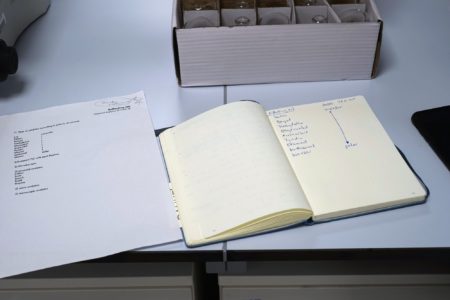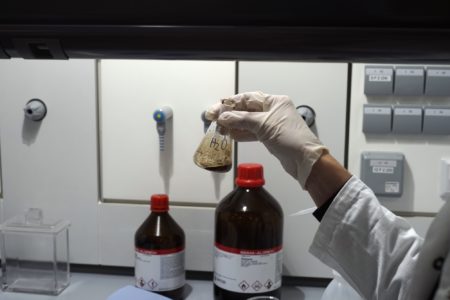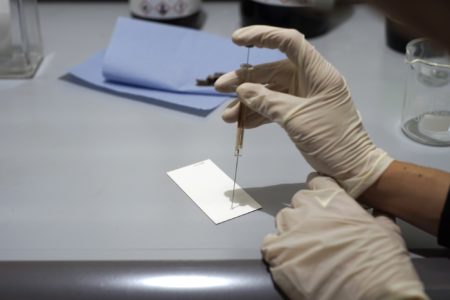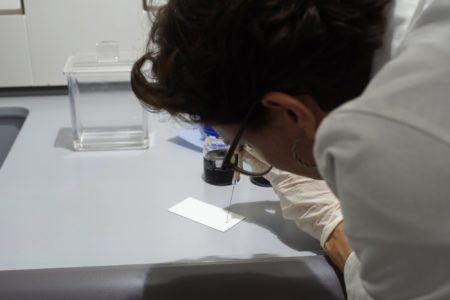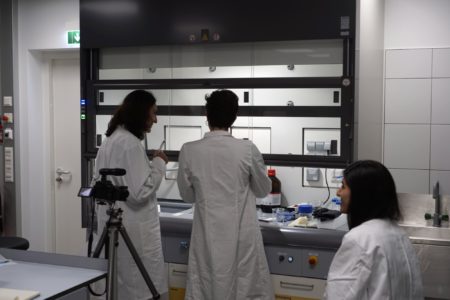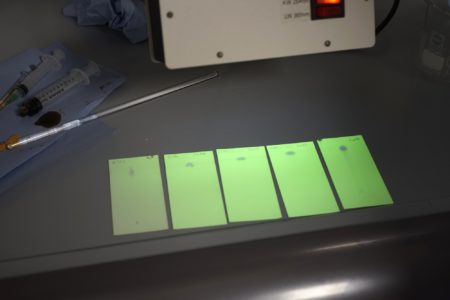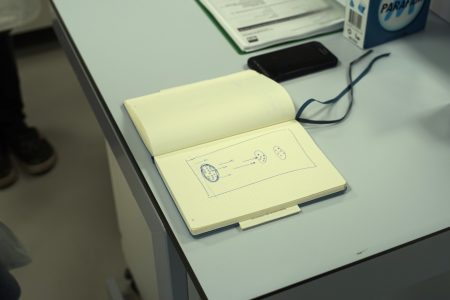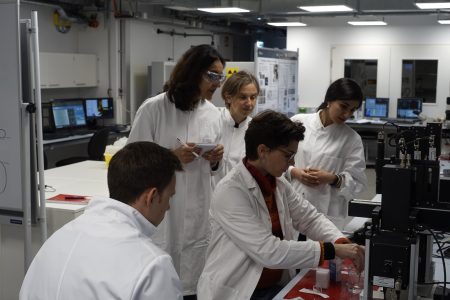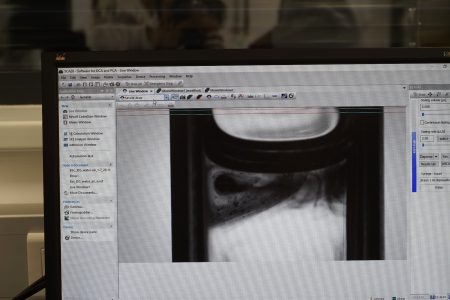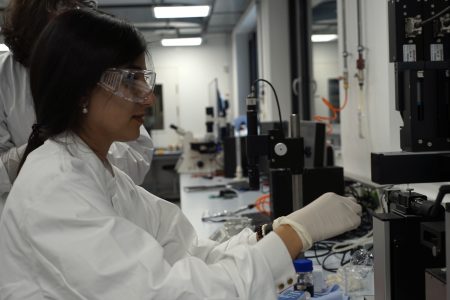Experiment I, Leoben, 28-29 November 2019
On 28 and 29 November we carried out our first experiments in the lab of the department Petrol Engineering at Montanuniversität Leoben. Led by artist and chemist Denise Schellmann we started with simple, basic experiments on the chemical analysis of crude oil. In this first experiment we not only wanted to get to know crude oil, but first and foremost the lab and the team. Those beginnings already led us to exciting discussions about approaches to knowledge, discovery and our desire to create analogies between the substance and human relations.
We started our experiments by examining the solubility of crude oil in solvents of increasing polarity – from the least polar of our sequence, pentane, to the most polar, water. Subsequently we used thin-layer chromatography (TLC) to separate the mixed substances into their respective fractions of differing polarity. The resulting image visually represents crude oil and its components.
‘Water likes oil’, ‘they are a family’, ‘no, an anonymous crowd of people’ – in our attempts to interpret the visual results scientific discourse was expanded by everyday language. Terms such as mobility, diversity, unpredictability and complexity also evoke the material world in its sociocultural meanings and relations, and show the cultural embeddedness of oil.
Lastly, we conduct a microscopic analysis, where we also examine the behaviour of oil, when it is dripped onto water. Laboratory equipment for complex analyses of rock, fluidity and oil such as computerised tomography (CT) for core flooding tests and the pendant drop tensiometer also afford intriguing aesthetic possibilities.
The way the oil droplet dissolves in water is stunningly beautiful. Scientific tests also focus on the formation of the droplet. In order for crude oil to easily flow out of the rock, the oil droplet should have a flexible, but strong shape. Oil is thus the substance of a micro-sculptural process.
experiment | Leoben | solubility | polarity | thin-layer chromatography | microscopic analysis | computerised tomography | pendant drop tensiometer
